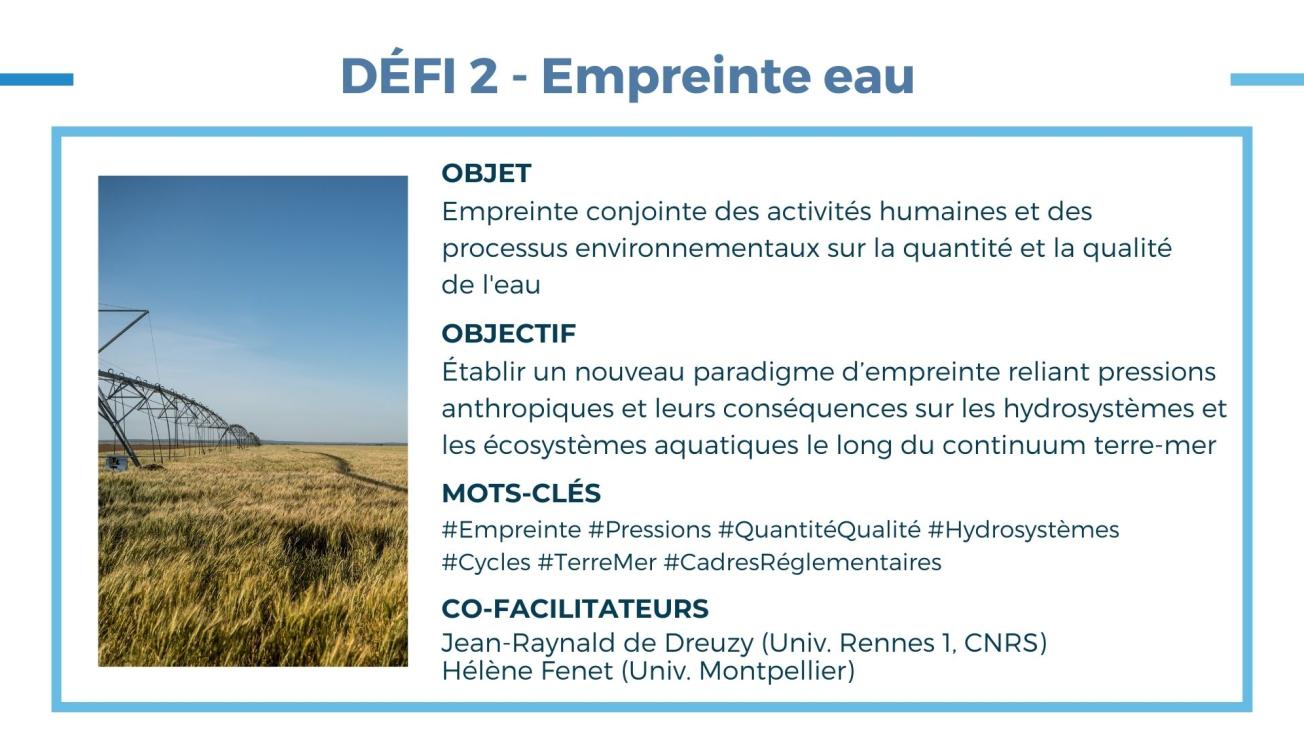Co-facilitators


Presentation
Challenge 2 aims to define a new, all-encompassing concept of water footprint incorporating not only the quantity of water required to produce goods and services, but also the impacts on water quality in its many biogeochemical dimensions. This concept will connect all anthropogenic pressures to their consequences on the full spectrum of hydrosystems and aquatic ecosystems, taking into account the major changes in the water footprint throughout the water and elements cycles along the land-sea continuum, where conditions change. This challenge encompasses four main aspects:
1. Characterizing the environmental, economic and social dimensions of the various pressures, from the scale of individuals to that of public authorities, while determining the multiple routes of contamination including, but not limited to, emerging contaminants (e.g. nano-contaminants, antibiotics) and chronic contaminants (metals, fertilizers, nutrients, pesticides), antimicrobial-resistant pathogens and micro-organisms, and cocktail effects.
2. Quantifying the transformation of this water footprint from source to impact and from upstream to downstream, including solute transport and reaction mechanisms, interactions with living organisms (e.g. micro-organisms, invertebrates and vertebrates, plants), and the ‘hot spots’ and ‘hot moments’ in biogeochemical dynamics.
3. Putting forward feasible measures for this concept of a comprehensive water footprint, such as chemical and biological signatures (e.g. dissolved gases, genomics), concentration-flow relationships to link flows to biomass and biodiversity, and residence, transit and exposure times. This will mean going beyond averages that mask the effects of critical events (e.g. drought) often associated with chronic effects such as diffuse contamination.
4. Estimating the evolution of the water footprint in a context of global change to help counter the risks of crossing the tipping points, and to ensure that it is also understood and taken on board by stakeholders with a view to co-constructing the dynamics and objectives of Challenge 5.
The concept and modelling approach will be demonstrated in field observatories.

DÉFI 2 - Empreinte eau
© OneWater

